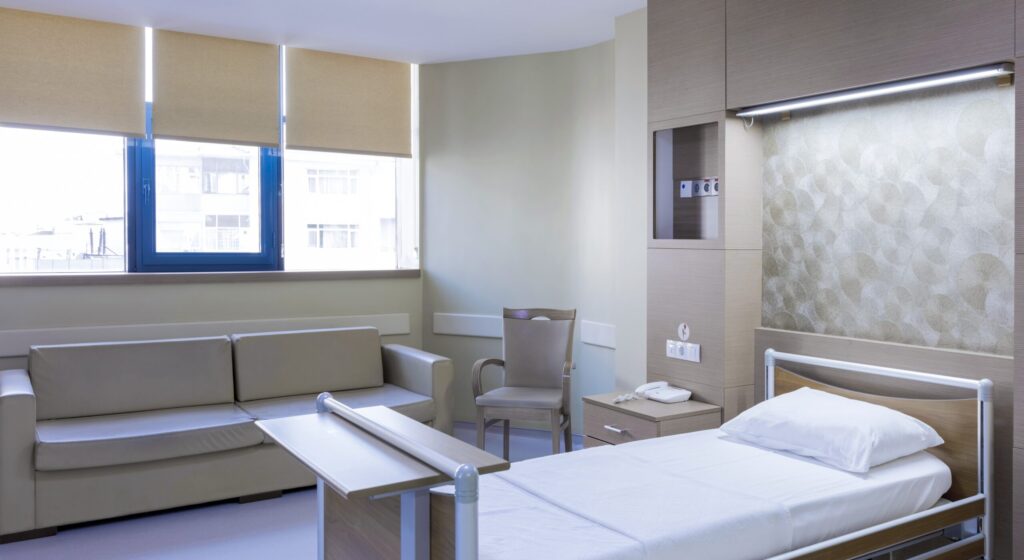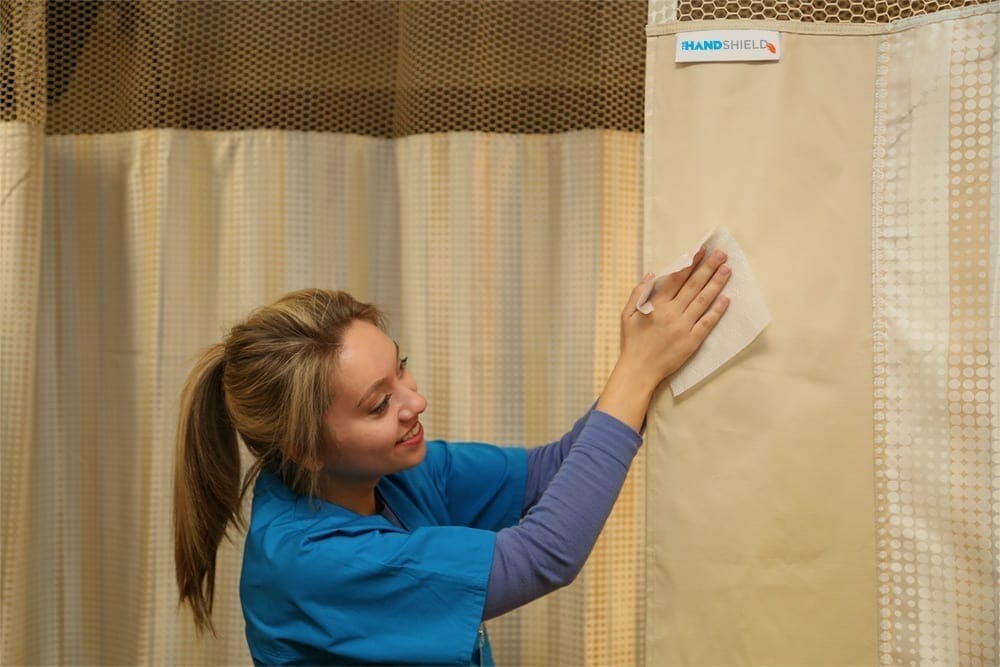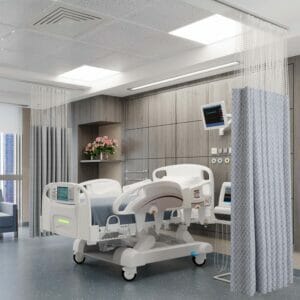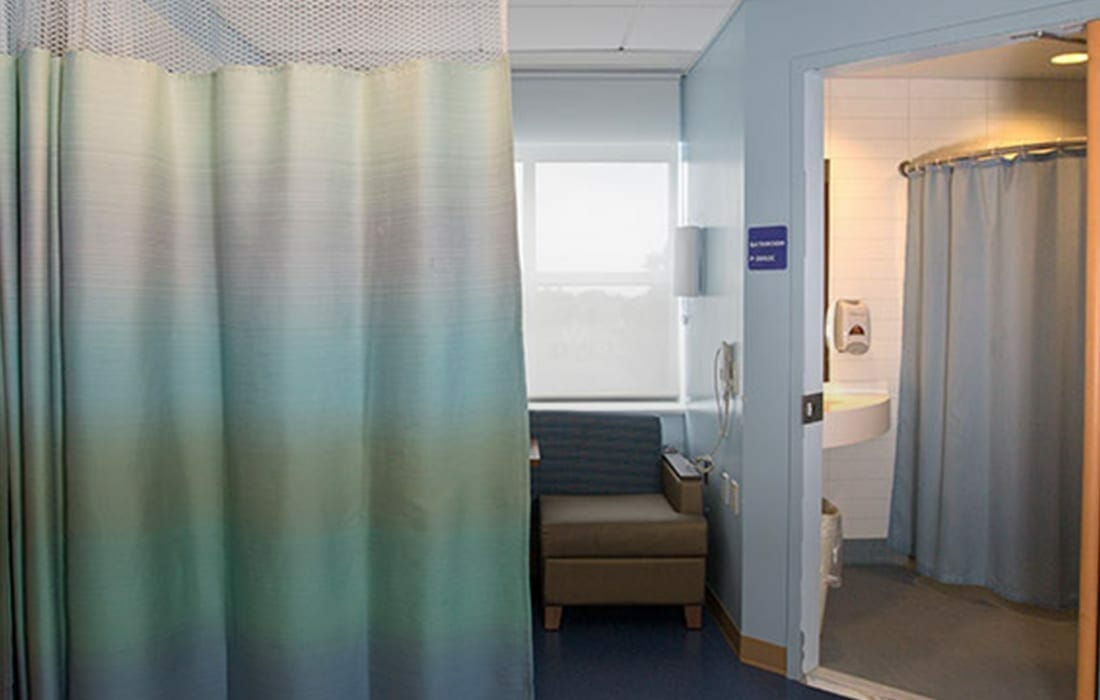In healthcare, the smallest details often make the biggest difference. From sterile instruments to hand hygiene practices, every measure is taken to protect patients and keep facilities compliant. Yet, one area frequently underestimated is the role of privacy and discharge curtains. These fabric barriers are used daily in hospitals, clinics, and long-term care facilities. Because they are touched so often by staff, patients, and visitors, they are a significant factor in infection control and compliance.
Managing curtains effectively, however, is more complicated than it seems. Tracking laundering schedules, ensuring availability, repairing damage, and documenting compliance require time, staff resources, and administrative oversight. For this reason, healthcare providers are increasingly turning to rental programs as a solution. Rental services take on the responsibility of supplying, maintaining, and replacing curtains, freeing hospitals to focus on what matters most: patient care.
This blog explores how rental programs simplify curtain management, why they are more efficient than ownership, and how they support compliance, safety, and operational excellence.
The Challenge of Curtain Management in Healthcare
Managing privacy and discharge curtains is far from a simple task. Hospitals must address multiple challenges, including:
-
Frequent contamination – Curtains are touched constantly and need frequent laundering.
-
Complex compliance requirements – Inspectors often request cleaning records and schedules.
-
Staff workload – Nursing staff and custodians already have heavy responsibilities.
-
Inventory management – Facilities must track curtain availability, cleaning, and replacements.
-
Repair and replacement costs – Damaged curtains must be fixed or replaced promptly.
These challenges often leave hospitals vulnerable to compliance gaps, infection control failures, and logistical inefficiencies.

For a deeper understanding of how curtains influence compliance, see How Privacy Curtain Rental Elevates Compliance in Hospitals, which outlines the direct connection between curtain management and regulatory readiness.
Why Ownership Creates Problems
Traditionally, hospitals purchased and managed their own curtains. At first glance, this seems practical: the facility has full control over its inventory. However, ownership comes with hidden costs and inefficiencies.
-
Unpredictable laundry cycles – Hospitals often fall behind on laundering schedules due to staff shortages or competing priorities.
-
Documentation gaps – When records of curtain servicing are incomplete, inspections become stressful and risky.
-
Excess inventory – To prevent shortages, hospitals often buy more curtains than needed, creating storage problems.
-
Repair delays – Damaged curtains may remain in use longer than is safe due to delays in repair or replacement.
-
Budget strain – Between laundering, replacement, and storage, curtain ownership often costs more than expected.
Ownership not only creates logistical problems but also increases the risk of non-compliance. Hospitals that fail to properly document or rotate their curtains can face penalties or negative inspection outcomes.
How Rental Programs Transform Curtain Management
Rental programs resolve these issues by transferring responsibility to specialized providers. Instead of juggling purchases, laundry, and inventory, hospitals gain a streamlined service that ensures curtains are clean, compliant, and available when needed.
Here’s how rental programs simplify healthcare curtain management:
1. Professional Cleaning and Hygiene Assurance
Rental providers clean curtains using healthcare-grade laundering processes designed to remove pathogens and prevent cross-contamination. Curtains are delivered sanitized and ready to install. This eliminates the need for hospitals to run their own laundering schedules.
2. Scheduled Replacements
Rental programs operate on predictable schedules. Curtains are replaced at regular intervals, reducing the risk of curtains remaining in use beyond safe timelines. This routine ensures compliance without the need for constant staff oversight.
3. Comprehensive Documentation
One of the most valuable benefits of rental programs is documentation. Providers keep detailed records of cleaning and replacement cycles. These records are available during inspections, making compliance far less stressful.
4. Reduced Workload for Staff
With curtain rentals, hospital staff no longer need to track cleaning schedules, handle laundry logistics, or arrange repairs. This reduces administrative burdens and allows healthcare workers to dedicate more time to patient care.
5. Guaranteed Availability
Rental programs maintain an adequate supply of curtains. If one is damaged or soiled unexpectedly, a replacement can be provided quickly. This reduces downtime and ensures patients always have privacy and protection.
6. Cost Predictability
Instead of unpredictable expenses for laundry, repairs, and replacements, rental programs operate on fixed pricing models. This helps administrators budget more effectively and reduces financial surprises.
Rental Programs and Infection Control
Infection control is at the heart of healthcare compliance. Curtains are high-touch surfaces that can easily harbor bacteria and viruses. Without strict laundering protocols, they can contribute to hospital-acquired infections.
Rental programs support infection control by:
-
Delivering freshly cleaned curtains at scheduled intervals.
-
Ensuring proper removal and replacement procedures.
-
Reducing the likelihood of contaminated curtains remaining in use.
-
Supporting compliance with CDC and Joint Commission guidelines.
By outsourcing curtain management, hospitals can integrate curtain servicing into their broader infection prevention strategy without adding pressure to internal staff.
Enhancing Efficiency and Compliance
Compliance requires more than just clean curtains; it demands proof. Inspectors often ask hospitals to provide evidence of laundering schedules and replacement records. Rental programs simplify this by maintaining complete documentation that can be shared instantly during audits.
This combination of efficiency and compliance makes rental programs invaluable for modern healthcare facilities. By streamlining curtain management, facilities can focus their attention on patient care and broader compliance initiatives.
For further reading on how rental and servicing improve hospital workflow, see Why a Reliable Discharge Curtain Service Is Essential for Hospital Efficiency, which explores the direct link between curtain services and operational performance.
Patient-Centered Benefits of Curtain Rentals
While the focus of rental programs is compliance and efficiency, the impact extends to patients as well. Clean, well-maintained curtains send a clear message: the facility prioritizes hygiene and patient dignity. Patients and families notice the small details, and fresh curtains contribute to a sense of safety and trust.

Additionally, the assurance of privacy through functional curtains helps improve patient satisfaction scores—a metric increasingly tied to hospital funding and reputation.
The Future of Curtain Management
Healthcare regulations are only becoming more rigorous, and hospitals will continue to face pressure to demonstrate accountability in every area of operations. Privacy and discharge curtains, once overlooked, are now recognized as critical components of infection control and compliance.
Rental programs are emerging as the most effective solution for meeting these challenges. They combine professional hygiene services, consistent documentation, and cost predictability into a single streamlined system.
Providers like HAIGuard™ are leading the way by offering rental services that not only simplify curtain management but also enhance compliance and operational efficiency. By embracing these solutions, hospitals gain a trusted partner in maintaining the highest standards of care.
Curtain management in healthcare is often underestimated, but its impact on compliance, infection control, and patient experience is undeniable. Traditional ownership creates logistical headaches and compliance risks, while rental programs provide a seamless, reliable solution.
By outsourcing curtain management, hospitals benefit from professional laundering, scheduled replacements, comprehensive documentation, and guaranteed availability. This approach reduces staff workload, enhances efficiency, and ensures facilities remain inspection-ready at all times.
As regulations evolve and patient expectations rise, rental programs will continue to be the gold standard for curtain management. With trusted partners like HAIGuard™, healthcare facilities can stay compliant, efficient, and patient-focused—without the burden of managing curtains in-house.








